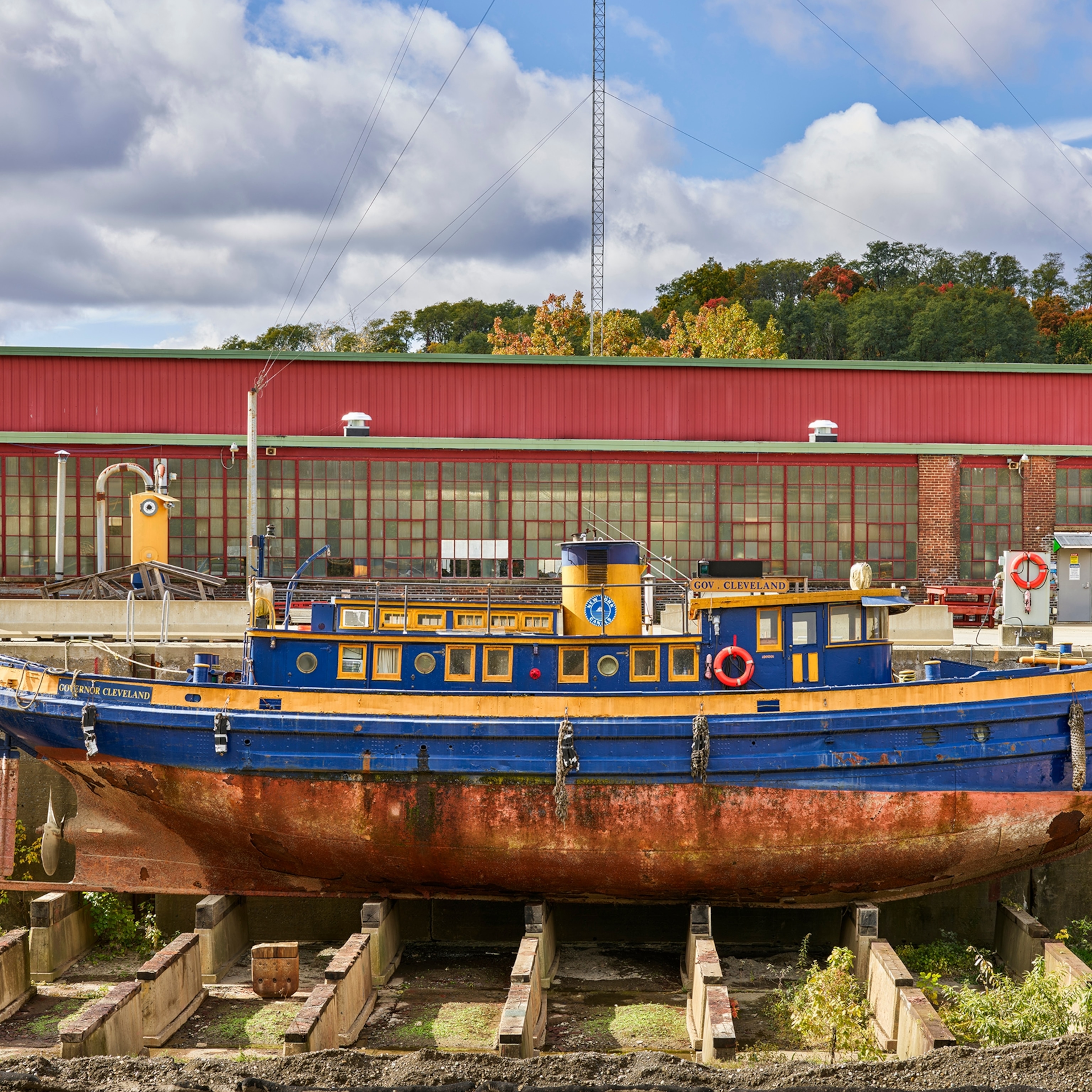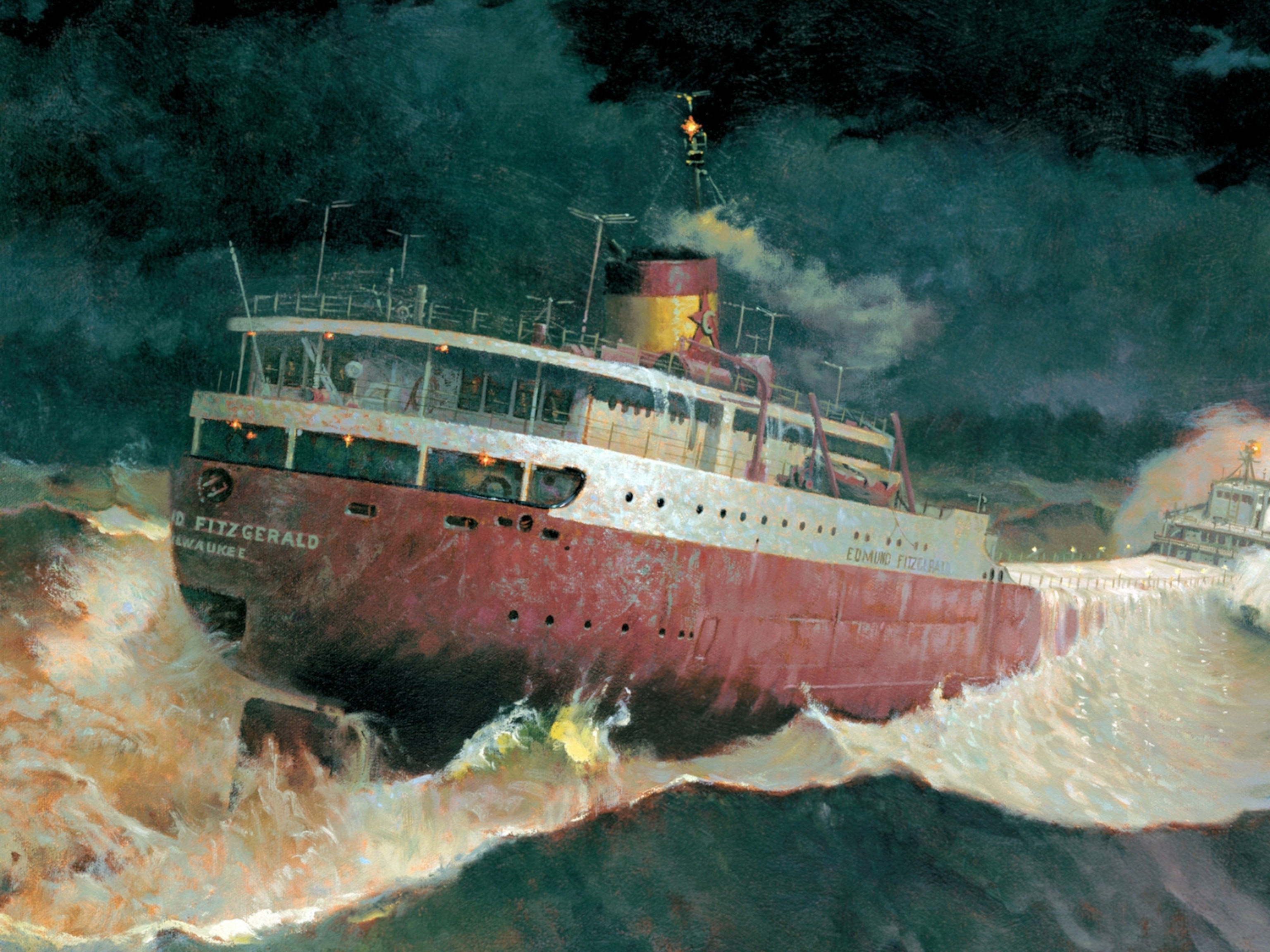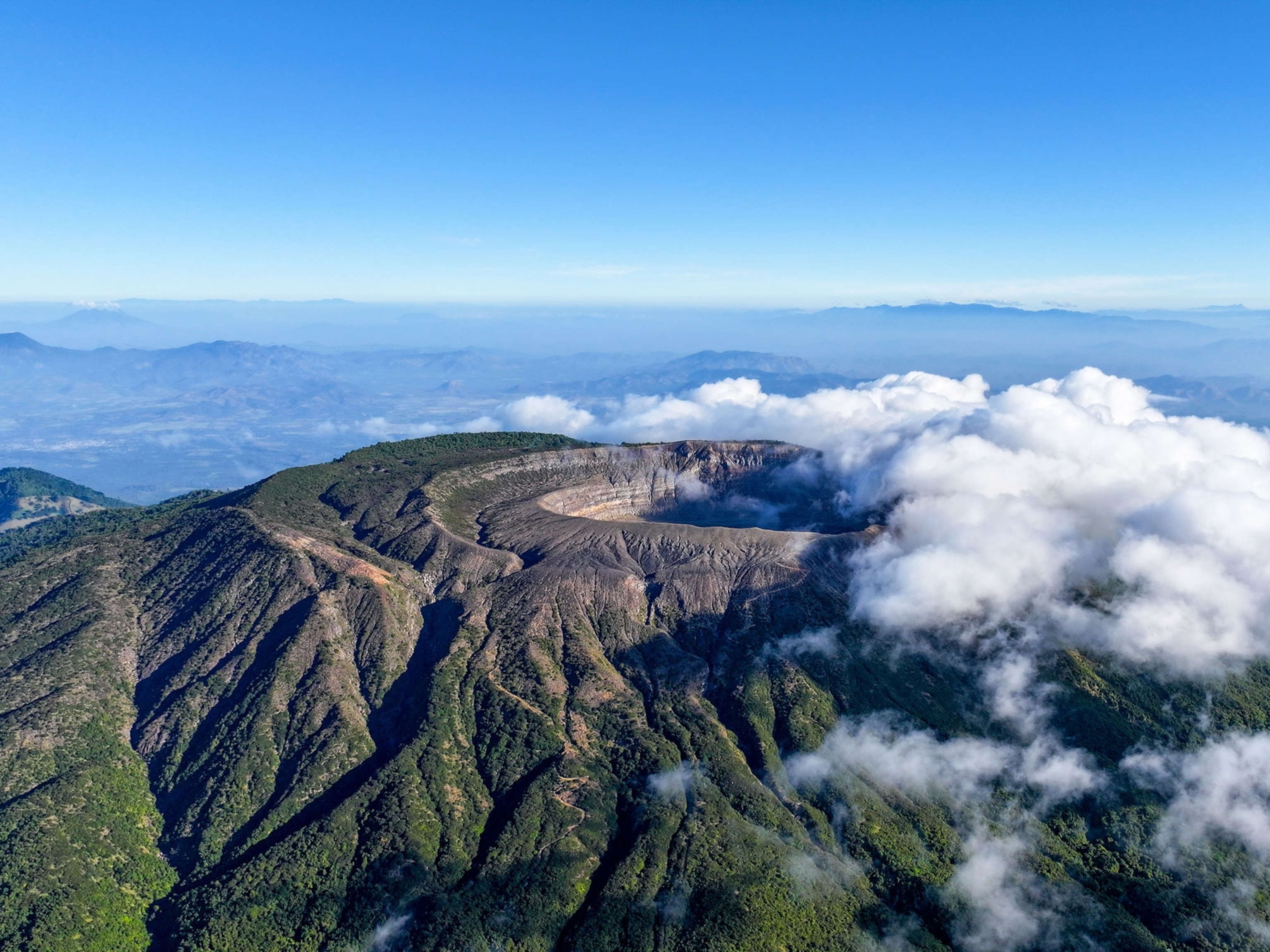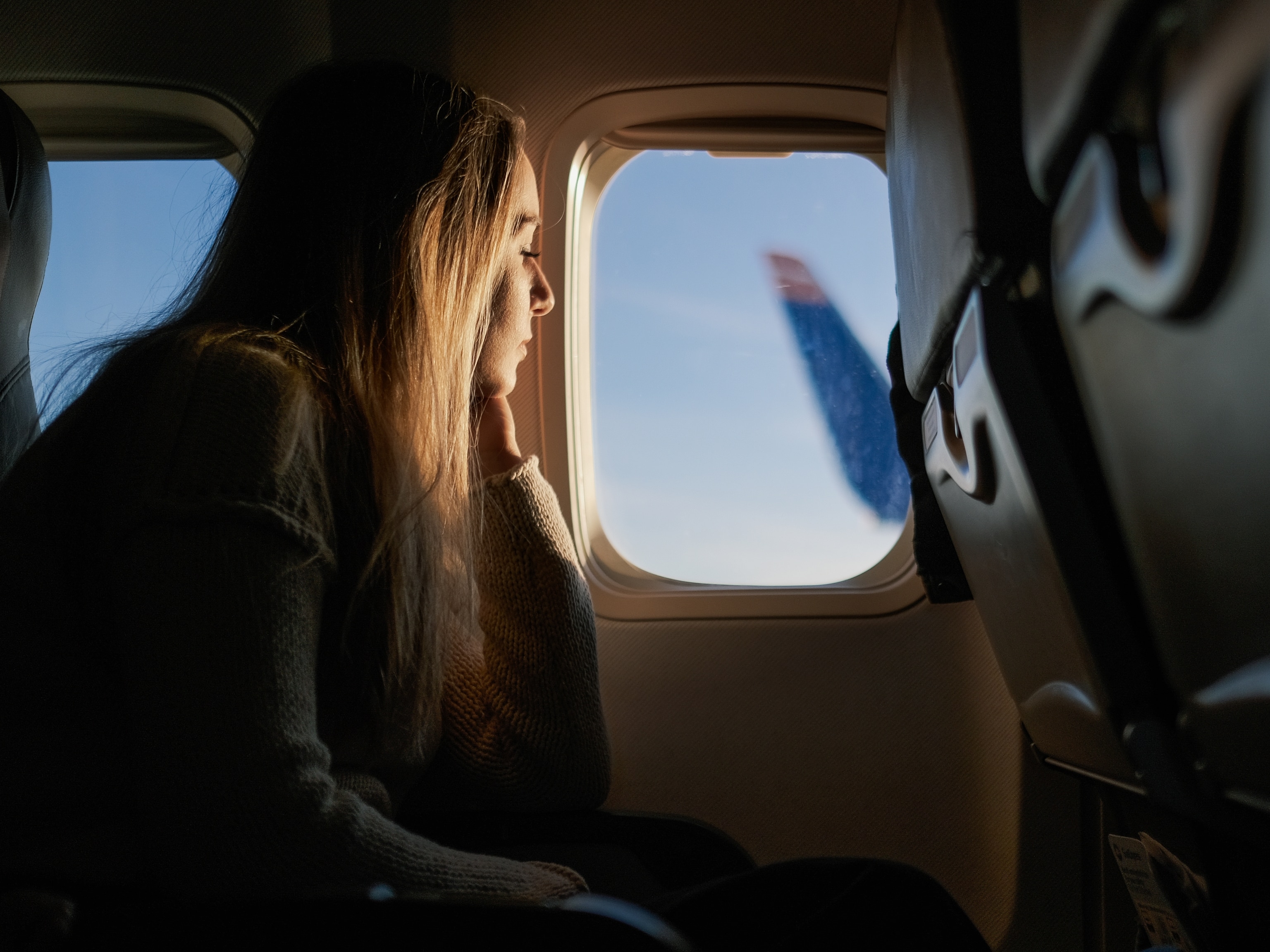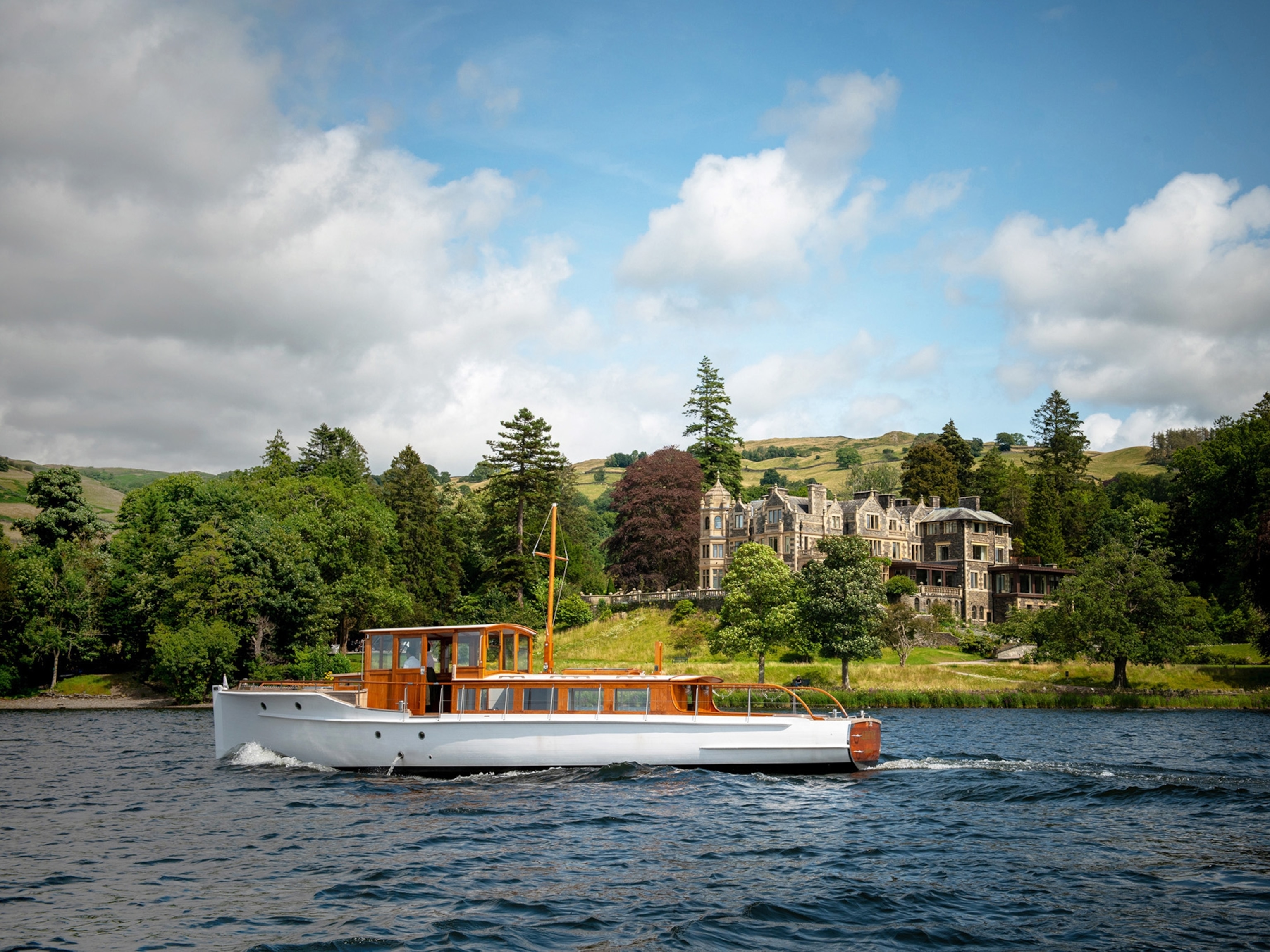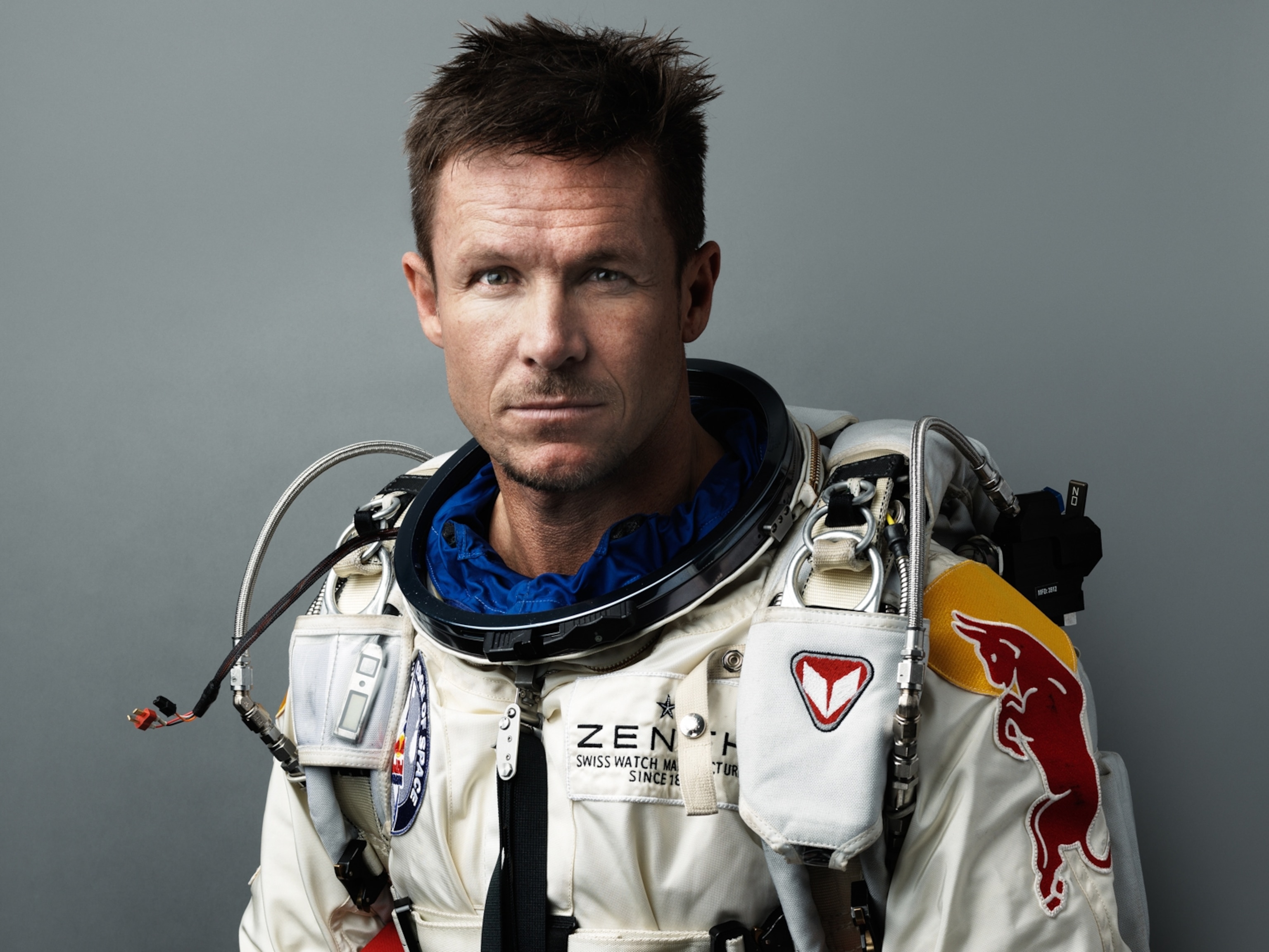
The World’s Ship Pilots Putter Around in Tiny Scale Models
In a lake in the French Alps, precisely built miniature boats offer lessons in how to dock, maneuver, and otherwise avoid calamity in a tight canal or crowded harbor.
“Believe me my young friend, there is nothing—absolutely nothing—half so much worth doing as simply messing about in boats …”
—Rat in The Wind in The Willows
GRENOBLE, France—At just more than 41 feet long, with miniature anchors that really work and seating for two where the bridge ought to be, the replica of the Royal Caribbean International’s Voyager of the Seas, seen puttering across a picturesque lake in the French Alps on a crisp clear morning, looks a lot like a rich man’s folly.
It’s being captained by Mauro Martuscelli, a Brazilian harbor pilot in his mid-50s who travelled here from his home port in Santos to spend a week steering this model ship, and others like it, around this 13-acre man-made lake. Also cruising around the lake, in similarly folly-sized tankers and container ships, are four Russian sea captains, a colleague from Santos, and a Canadian pilot who would normally be taking ships up Alaska’s inside passage but today is berthing a scale model of one of the world’s largest LNG tankers at a mock-up of the giant Saudi Arabian oil and gas terminal at Ras Tanura.
Class is in session at Port Revel, one of the world’s most remarkable ship-handling schools, where students—professional maritime pilots and ship’s officers—train using a fleet of charming-looking, meticulously engineered, model ships.
“I come here and do dangerous things all day,” says Martuscelli, who has spent the past two hours practicing emergency stops in the shallows of an (imagined) crowded harbor, with losses of engine power and rudder control thrown in as an added challenge. Harrowing, potentially catastrophic, events were they to take place on a real cruise liner in a real harbor, here in the controlled environment of Port Revel with its 1:25 scale ships, they become merely abstract problems to be analyzed and solved.
“A pilot might encounter emergencies like this in real life maybe only once in his whole career, maybe never,” he says. “On the other hand I could go home next week and have this happen my first day back. You just never know. And that’s the thing: A pilot has to be ready to handle any sort of emergency that might crop up. We have to train for everything and the best way to do that is in a ship, on the water, in real time.”
A pilot has to be ready to handle any sort of emergency that might crop up. We have to train for everything and the best way to do that is in a ship, on the water, in real time.Mauro Martuscelli, Brazilian ship pilot
Since it was founded in 1967 as a training platform for Esso’s oil tanker captains more than 6,000 students from all over the world have come to Port Revel to hone their skills. The wooded location in the French Alps—seemingly a curious one for a ship-handling school—was chosen because of its mild climate and the fact there is seldom any wind here. Nature is no respecter of modelling and on a 1:25 scale ship even a moderate breeze can simulate a hurricane. The “port” itself was named for an old family, the Revels, who owned the land since the 13th century.
Originally the facility mainly trained sea captains. By the 1970s, however, it had been “discovered” by the world’s maritime pilots, who came there in droves and today make up more than 80 percent of its students. Now in the hands of the Artelia Group, it is one of six specialist facilities around the world that use manned models, the others being in the United States, Britain and Australia. What seemed novel to teaching ship-handling in the 1960s, is now mainstream, with the International Maritime Organization recommending time in manned models as a standard part of a pilot’s training.
“It is far more realistic than anything you can get on a computer simulator,” says Martuscelli, who has also trained on simulators. “Nobody has yet written a program that can give you the precise feel of a ship on the water, and that is so important. The training has to be real.”
It’s far safer and more practical, too, than borrowing a 70,000-ton cruise liner and practicing emergency maneuvers in a busy shipping lane—and maybe making some mistakes. “No ship owner is ever going to allow you to do that,” says Arthur de Graauw, who was Port Revel’s director until last month. “Even if you could find one who would let you, there’s not a harbormaster in the world who would permit it.”
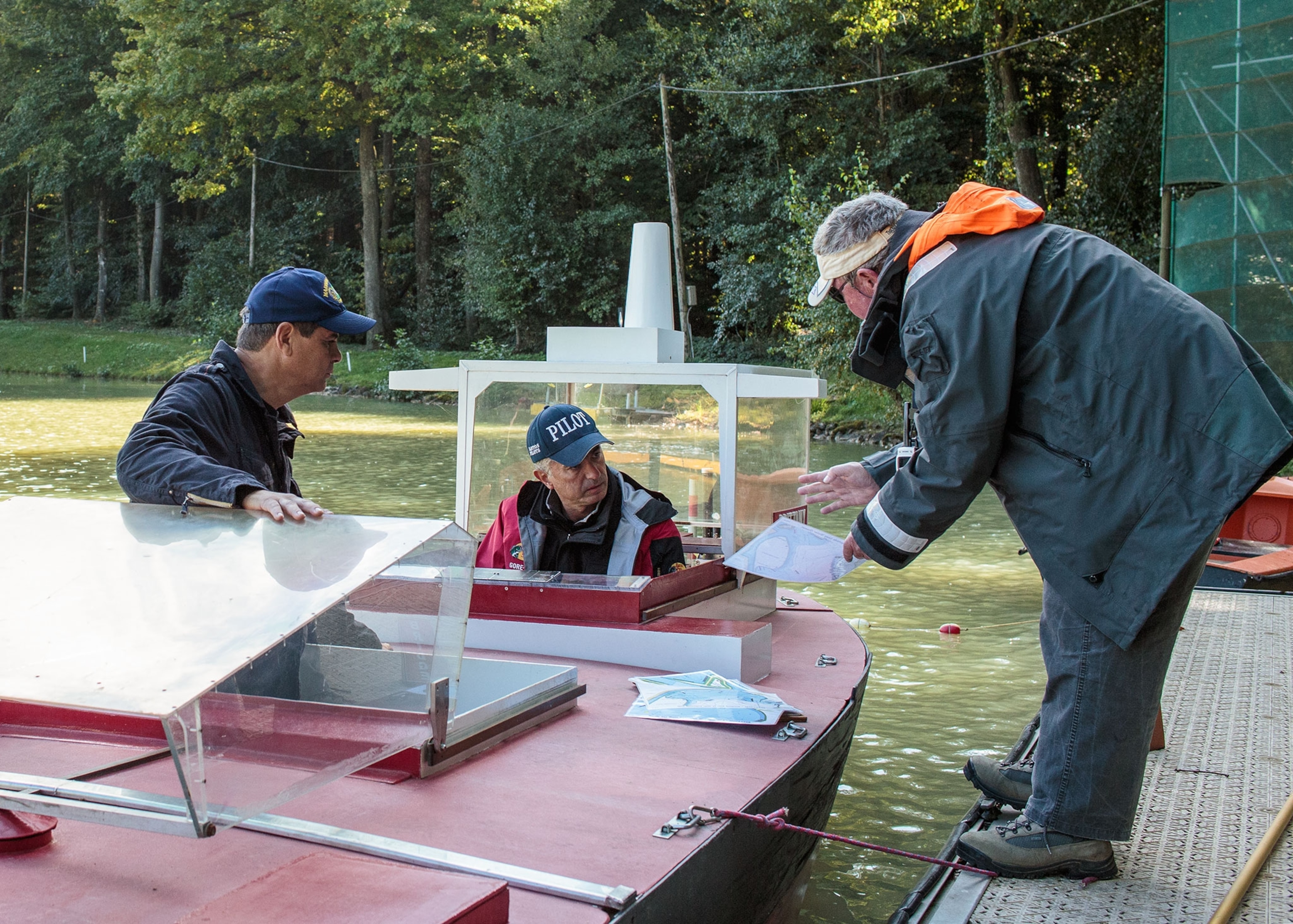
And so to Port Revel. “We can set up almost any situation here on the lake,” says de Graauw, whose background is in coastal engineering and who has helped design many of the lake’s features in his 17 years as director.
In addition to being able to re-create the approaches to specific harbors and oil terminals, the school has its own mock-up of the giant new locks that will open next year on the Panama Canal, as well as a miniaturized stretch of the Suez Canal, built along the same exacting 1:25 scale as the school’s model ships.
“Most of the training involves ship-handling in shallow water situations and dealing with emergencies,” says de Graauw. “You can practice these things safely here. If somebody messes up on the lake, there’s no harm done—except maybe to the ego.”
Models Create Mini Version of Real-World Conditions
Ship-handling courses at Port Revel typically last a week, cost the equivalent of $11,700 and involve an hour of classroom briefings each morning followed by long intensive days on the water. The instructors are all veteran pilots from France and the Netherlands with decades of experience bringing ships in and out of Europe’s busiest ports.
“We start them off easy,” says instructor Alain Charmasson, a retired pilot who spent 27 years working the harbor at Le Havre. “On Mondays the lake will be like glass. By Wednesday things will be getting more interesting. And by Friday they will be dealing with some pretty treacherous currents, and the sorts of things we will be asking them to do will be much, much tougher.”
You can practice these things safely here. If somebody messes up on the lake, there’s no harm done—except maybe to the ego.Arthur de Graauw, Port Revel’s former director
To re-create real-world conditions the school has equipment set up around the lake to generate wind, waves and currents, and even keeps a stock of artificial ice floes to spread on the water to simulate an arctic harbor—a legacy of a contract to train pilots for the St. Lawrence Seaway. At Port Revel, exactitude is everything; even the imitation ice has been designed to behave as real ice floes would.
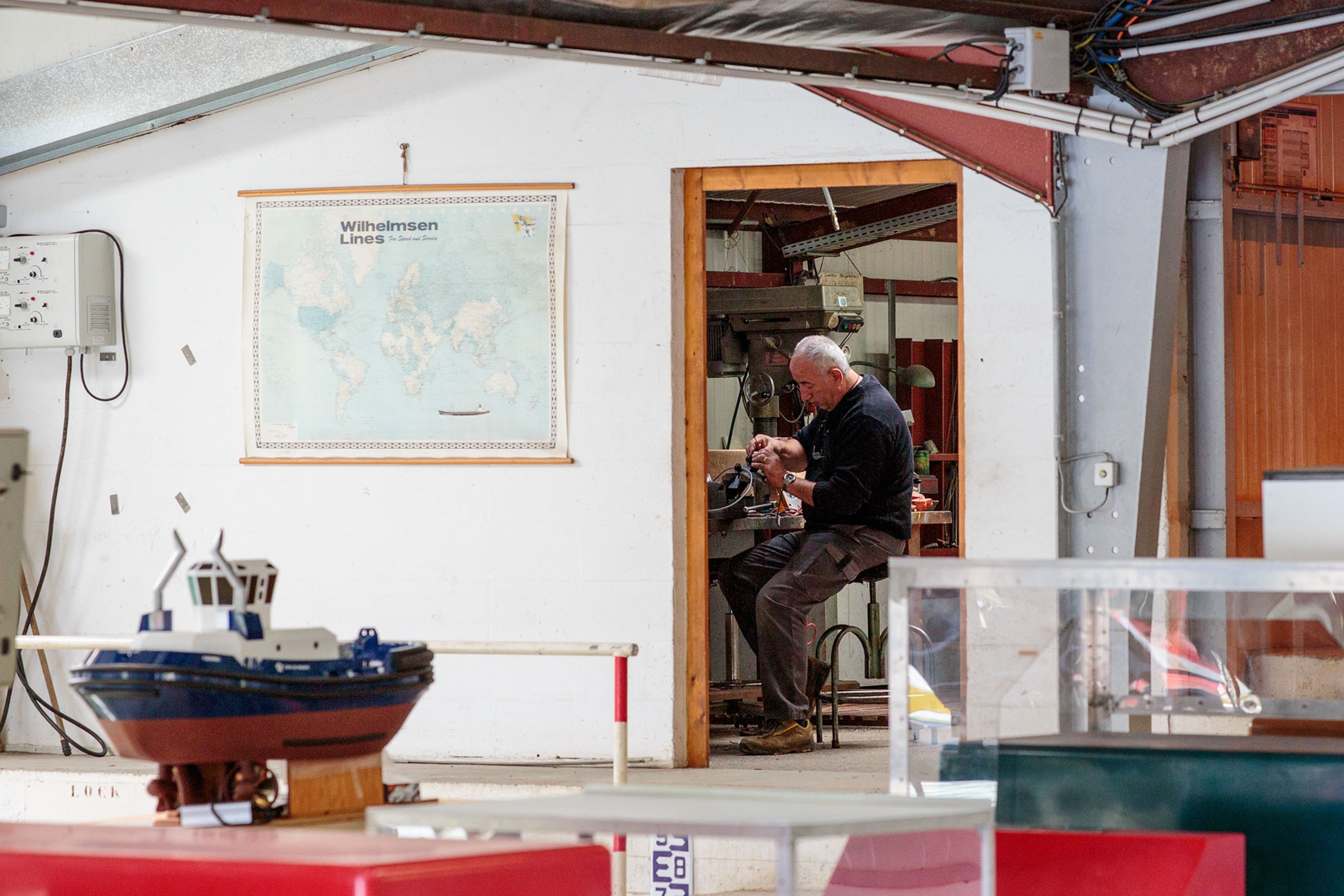
“The attention to detail is amazing,” says British Columbia pilot Brad Taipalus, who attended his first course at Port Revel in 1996 and returned this year for a refresher and an opportunity to get in some outside-the-envelope practice using azipods—directional propellers—of the sort used on the giant cruise liner Voyager and other huge ships, and to learn about the use of twin independent rudders, features he’d read about but never used. “I’ve been really keen to try those out,” he says. “I want to find out just what you can do with them—and just as importantly, what you can’t. It may be vital for me to know that someday.” But can motoring slowly around a lake in a model tanker really be the same as piloting the real thing? Taipalus laughs: “It’s unnerving how realistic these models are.”
Exactitude Pays Off in Scale Models
But then verisimilitude is Port Revel’s stock in trade. Talk to de Graauw or one of the instructors and invariably they refer to their ships in the terms of full-sized originals—the Brittany, say, is not a 40-foot model but a 250,000-ton crude oil tanker. Each of the 11 ships in the school’s fleet is based on a real ship and has been painstakingly designed, engineered and custom-built at a cost of nearly half a million dollars to mimic the on-the-water performance of its full-sized counterpart.
Each has perfectly scaled-down, working bow- and stern-thrusters, mooring lines, anchor winches, rudders, and azipods. Hydraulically speaking, in terms of the way the model slides through the water, it will handle precisely as the real ship would. The battery-powered electric motors can be adjusted to reproduce faithfully the lag times and performance characteristics of either diesel or steam turbine engines.
The attention to detail is amazing.Brad Taipalus, British Columbia ship pilot
To simulate tugboat operations the school has four radio-controlled ones, built on the same 1:25 scale, and operated by real-life tug-masters from Marseille. Indeed, so realistic are the tugboat operations that the Dutch designers of a new style of tugboat are using Port Revel to conduct mini sea trials of one of their prototypes.
Obtaining this level of accuracy meant gaining access to some commercially sensitive design information, says de Graauw, and relying on the goodwill of ship owners. “Some of the things we needed to know to bring everything down to scale even the ship’s architects couldn’t tell us,” he says.
“We had the captains using stopwatches to measure response times so we could be certain our models were as accurate as they could possibly be.” It paid off. When they invited the captain of one of the ships they’d modelled, the tanker Othello, to come and take the model for a spin on the lake, he returned stunned. “It was really quite emotional,” recalls de Graauw. “He kept saying, ‘That’s my ship, that’s my ship!’”
New Challenges on Panama and Suez Canals
Port Revel’s reputation for authenticity has piqued the interest of the Panama Canal Pilots Association, whose elite members are the only pilots allowed to take ships through the canal. With the opening next year of a huge new set of 1,400-foot-long locks, built at a cost of $6 billion and capable of handling some of the world’s largest container ships, they will be facing a new set of challenges—bigger ships, different protocols, the use of tugboats instead of locomotives to guide ships into the locks, and two-way traffic in the Culebra Cut, historically one of the trickiest sections.
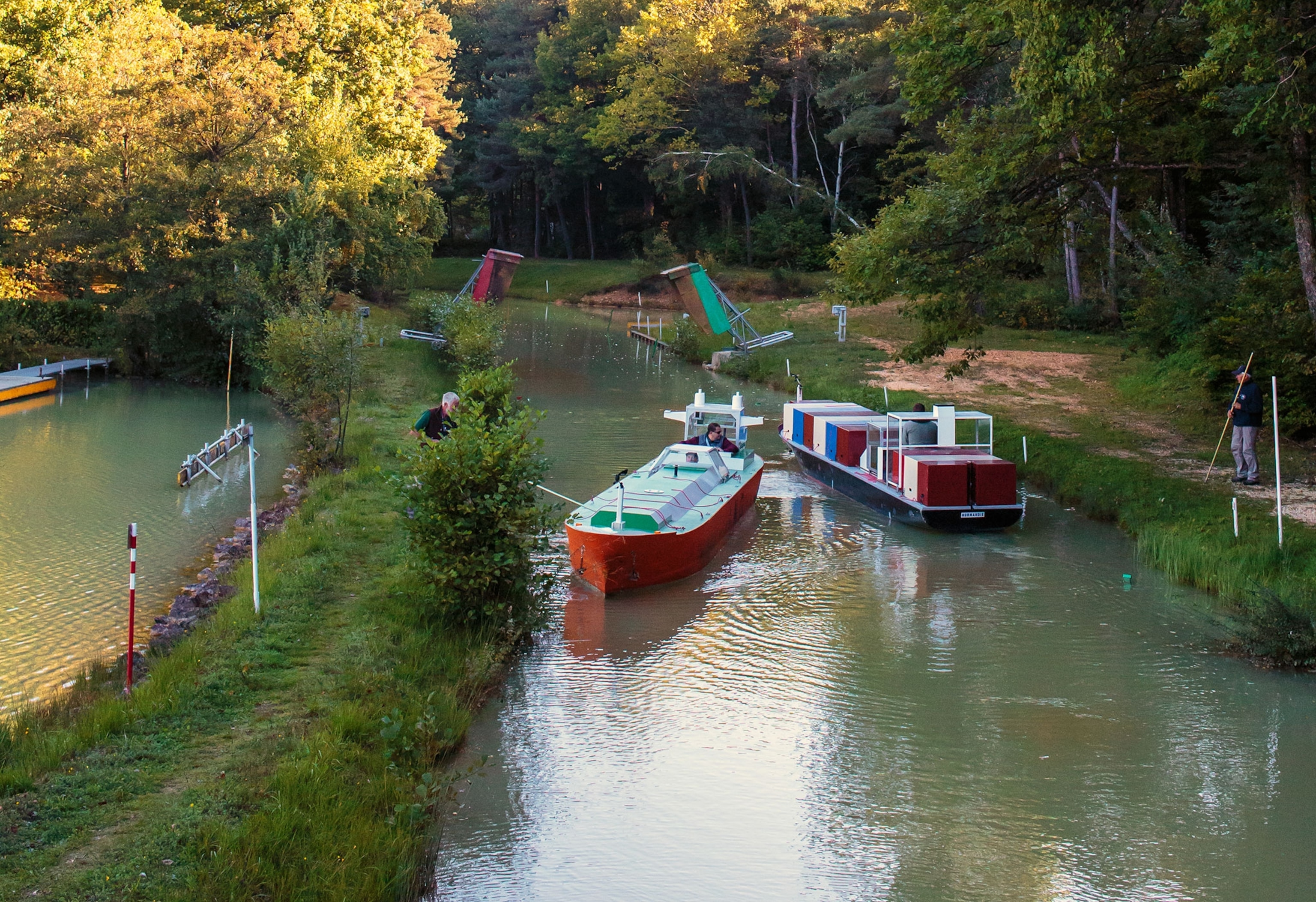
To help them prepare, the association is building its own training lake and sending its senior pilots and simulator instructors to Port Revel to learn the art of teaching ship-handling with manned models. “We are building two large model ships for their lake and sending them four radio-controlled tugs,” says de Graauw.
One of the things the Panama Canal pilots hope to test, once their training lake opens early next year, is whether the newly expanded channels in the Culebra Cut will really allow two of the enormous new ships to ease past each other in opposite directions, as the designers say it should.
This is something mariners sailing the Suez Canal are coming to grips with after its own new $8.5-billion expansion opened in August, ushering in two-way traffic for the first time in the canal’s 146-year history and doubling the number of ships that can pass through each day. It is to Port Revel that shipping companies are sending their captains to get in some practice.
Half past ten on a fine crisp morning and the school’s Suez Canal is still deep in shade. Gliding along its mirror-smooth waters is the 100,000-ton LNG carrier Ben Franklin, its student-captain proceeding under the watchful eye of one of Port Revel’s instructors, a veteran harbor pilot from Port La Nouvelle named Frédérick Perotin, who strolls along the bank of the canal, radio in one hand and gaff in the other, ready to give the Ben Franklin and its captain an assist if they stray too close to shore.
Steaming up the canal in the opposite direction is the 83,000-ton container ship Normandy. This particular pas de deux doesn’t quite go as planned. The skipper of the Normandy appears to take an awkward line, the master of the Ben Franklin attempts to sidle out of the way. With a potential collision looming, the two ships drift to a halt near the bank. Standing on a platform overlooking the canal instructor Alain Charmasson frowns then shrugs. “This is why we do these things here.”
Roff Smith is a regular contributor to National Geographic. His next article for the Magazine, on archaeological finds under London, will appear in the February issue. More of his writing can be found here and his photos here.
